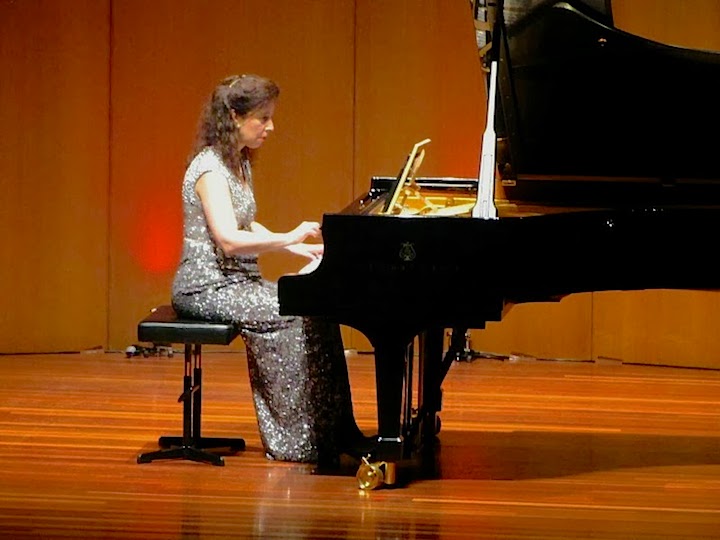
There is something abut Angela Hewitt’s analytical ferocity and pinpoint-precise playing that reveals all. As with an HD camera, every pore and nostril hair is laid bare for us to take in.
- Classical Music 101: What Does A Conductor Do? - June 17, 2019
- Classical Music 101 | What Does Period Instrument Mean? - May 6, 2019
- CLASSICAL MUSIC 101 | What Does It Mean To Be In Tune? - April 23, 2019
If there were no music to carry all this analysis, it would be best to move on. But Hewitt’s scalpel mind and clockwork fingers are informed by a larger and quite compelling artistic panorama. It is distinctly her own, though, which is a love-it-ot-hate-it proposition.
 In her latest recording, just released by Hyperion, Hewitt has assembled 72-1/2 minutes of Beethoven piano sonatas — the fourth volume in her ongoing survey.
In her latest recording, just released by Hyperion, Hewitt has assembled 72-1/2 minutes of Beethoven piano sonatas — the fourth volume in her ongoing survey.
As with everything else, there is a lot of thought behind the selection of three works, each from a different period in Beethoven’s compositional life, none counting among the more popular of his 32 sonatas, yet each a fine example of what he was doing at a given point in time.
The first work, Op. 22 (No. 11), from 1800, is all Classical form, given some spiky kick by Beethoven’s abrupt changes in dynamics — something all keyboard composers were savouring with the advent of instruments capable of bigger and more sudden dynamic changes (it was called the pianoforte for a reason).
Hewitt digs in, giving us a splashy opening, then turns her attention to the more delicate musical unfoldings of the next two movements before giving us a rousing finish.
The second work is Op. 31, No. 3 (Sonata No. 18), filled with that you’ll-never-guess-what-I’m-going-to-do-next quality of Beethoven’s middle period. Hewitt lays it out with utter clarity, keeping just enough narrative tension to force Beethoven’s playful patchwork to stitch together neatly.
The real charmer, for me is the final selection, the 28th Sonata, Op. 101, from 1816. Hewitt gives it a wonderful, searching quality that at times seems not of this world anymore — much like Franz Schubert’s late sonatas.
For me, the mental image conjured up by the overall effect of listening to Hewitt’s playing is that of a key being pressed by the eraser end of a pencil: precise, delicate, clean, hyper-articulated.
The overall sound, captured at the Jesus-Christus-Kirche in Berlin last year, has just enough spaciousness to beguile. But, as with the HD cameras, the definition is so great that I noted a couple of editing splices in the recording — something that would normally totally escape me.
I prefer my Beethoven a little messier, in the sense of less-obviously premeditated and more spontaneous-sounding (which is all a question of artifice artfully hidden) but there is a lot to love here, especially if you are already a Hewitt disciple.
For all the details as well as audio samples, click here.
John Terauds
- Classical Music 101: What Does A Conductor Do? - June 17, 2019
- Classical Music 101 | What Does Period Instrument Mean? - May 6, 2019
- CLASSICAL MUSIC 101 | What Does It Mean To Be In Tune? - April 23, 2019



